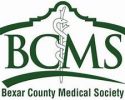A patient registration clerk — also often called a medical clerk or scribe — supports modern healthcare systems by performing many of the clerical duties for which physicians are responsible but have little time. Indeed, it is estimated that more than 50% of a doctor’s working day is spent on administrative tasks (like record-keeping, treatment orders, billing, and coding); partnering with a patient registration clerk or scribe enables doctors to spend a lot more time with patients, thus alleviating their burden and even improving the quality of their patients’ care! Take a look at what a patient registration clerk does:
Collects and Verifies Patient Information
The main responsibility of a patient registration clerk is to initiate and complete the patient registration process, collecting demographic data and documenting insurance coverage for patients so that their care is properly recorded and can be assessed in perpetuity.
Assists with Patient Scheduling and Billing
A patient registration clerk further assists medical and administrative staff by scheduling appointments, verifying insurance and billing codes, initiating referrals, and collecting payment for services.
Documents Patient Encounters
Of course, a patient registration clerk also frequently supports physicians as they document actual patient encounters, sit in on patient exams, and record pertinent details into the patient’s electronic health record (EHR) so that doctors can fully engage with patients and not be distracted by note-taking.
Researches and Updates Patient Accounts
When questions about past care come up, the patient registration clerk (rather than a professional provider) researches the patient’s history and makes necessary amendments in order to maintain quality of care and keep records up-to-date, accurate and relevant.
Distributes Patient Information
In addition, the patient registration clerk also helps inform patients of their rights and available opportunities by distributing relevant forms and informational sheets.
Serves as a Healthcare System Touchpoint
Finally, modern healthcare is dedicated to service and, as such, relies on quality patient interactions and experiences. A patient registration clerk interacts with patients and their families via the phone or upon their arrival at their appointments, helping to increase their satisfaction of care.
Want to Learn More?
These are just a few of the responsibilities of a patient registration clerk. To learn more about all the duties and requirements of a medical clerk position, please contact Provider’s Choice Scribe Services. Patient registration clerks perform a key service for medical providers that is made better by our comprehensive medical scribe training and ongoing administrative management. Partnering with PC Scribes benefits everyone — the scribe, the physician, and the patient!



